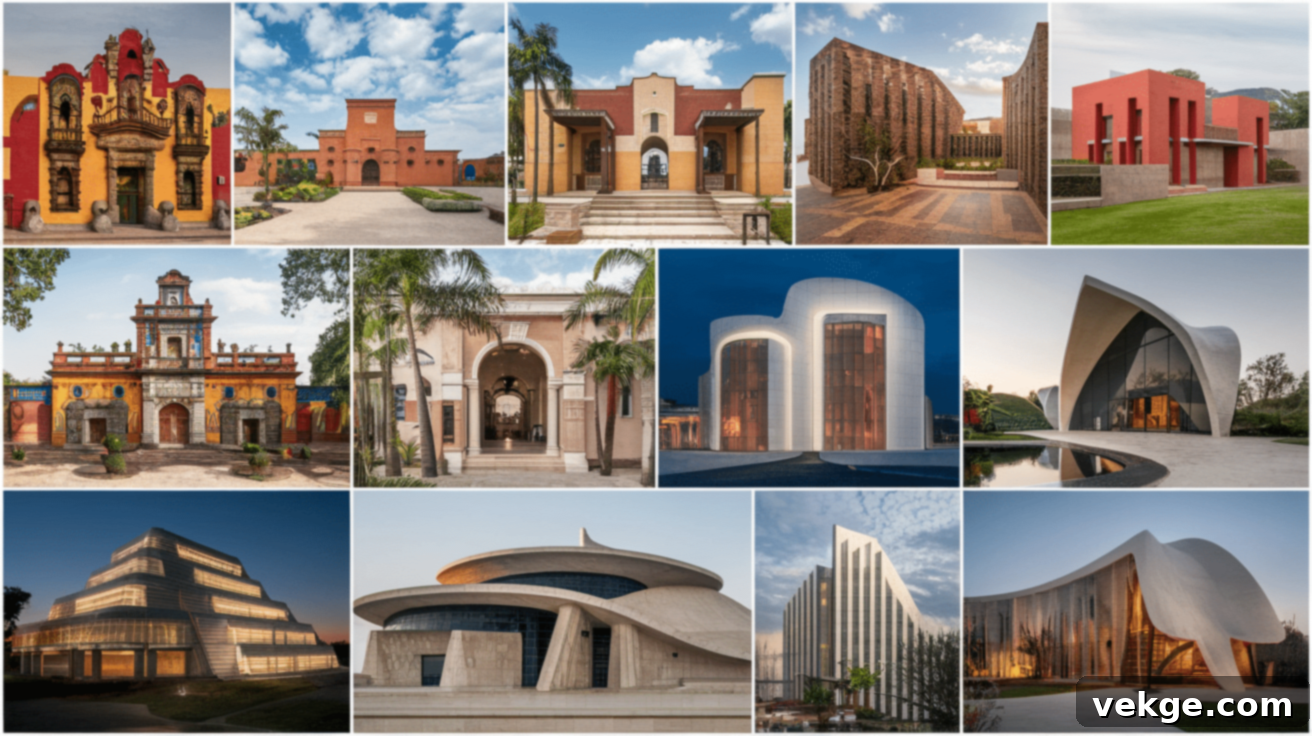Unveiling the Visionaries: The Most Famous Mexican Architects and Their Global Impact
Mexican architecture stands as a vibrant testament to creativity, culture, and innovation. Far from being confined to its borders, the visionary work of Mexican architects has left an indelible mark on the global stage. These talented designers have crafted buildings that are not only aesthetically captivating but also deeply connected to their environment and cultural heritage.
From the sun-drenched, colorful residences that define a style to colossal museums that become urban landmarks, Mexican architects possess a unique ability to create spaces that evoke emotion and inspire awe. Their distinctive use of bold colors, sophisticated manipulation of natural light, and the elegance of simple, yet profound, geometric forms have fundamentally reshaped international perceptions of modern design.
This article invites you on a journey to explore the captivating world of Mexican architecture. We will delve into its rich history, identify its most influential figures, and examine how their groundbreaking ideas continue to influence and transform the spaces where we live, work, and engage with our communities worldwide.
The Enduring Legacy of Mexican Architecture: A Blend of Tradition and Innovation
Mexican architecture is a dynamic narrative, evolving through millennia from the monumental temples of ancient civilizations to the intricate designs of the colonial era and the bold expressions of contemporary modernism. This rich history showcases a continuous dialogue between tradition and innovation, where each period builds upon the last, contributing to a distinctive national identity.
Today, architects continue to weave Mexico’s vibrant spirit into functional, culturally rich structures, demonstrating a profound understanding of their context and a forward-thinking approach to design.
How Mexican Architecture Has Transformed Over Time
The story of Mexican architecture stretches back thousands of years, beginning with the astonishing achievements of pre-Hispanic civilizations like the Maya, Aztec, and Zapotec. These ancient cultures engineered massive stone pyramids, ceremonial centers, and complex urban layouts, such as those found in Teotihuacan or Palenque, which continue to astound us with their precision and scale. These early builders mastered the art of working with their environment, aligning structures with celestial events and utilizing local materials.
With the arrival of the Spanish in the 16th century, a new architectural chapter began. European styles, particularly Baroque and Neoclassical, merged with indigenous craftsmanship to form what we now recognize as Colonial architecture. This fusion resulted in grand stone churches, ornate cathedrals, bustling town squares (zócalos), and elegant homes often featuring peaceful inner courtyards. These beautiful, historically rich buildings remain a defining feature of many historic Mexican cities, telling tales of a complex cultural exchange.
The 20th century heralded a new era where Mexican architects sought to forge a modern style rooted in their own identity, distinct from European influences. They creatively blended ancient Mexican motifs and colors with contemporary building techniques. Visionaries like Luis Barragán rose to prominence, celebrated for their mastery of bright, expressive colors, minimalist forms, and ingenious methods of harnessing natural light to create tranquil, almost spiritual, environments.
- Ancient Period: Characterized by monumental stone temples, pyramids, and sophisticated civic centers designed by civilizations like the Maya and Aztecs.
- Colonial Period: A rich synthesis of Spanish Baroque and Neoclassical influences with indigenous adaptations, evident in grand churches, plazas, and haciendas.
- Modern Period: A unique Mexican interpretation of contemporary design, emphasizing bold colors, regional materials, and the interplay of light and shadow, led by figures like Luis Barragán.
Mexican Architecture’s Global Footprint
Mexican architecture has not merely developed internally; its impact has resonated across the globe. Luis Barragán’s receipt of the prestigious Pritzker Architecture Prize in 1980 was a pivotal moment, validating Mexican design on an international scale and demonstrating that deeply rooted cultural expression could also be profoundly modern and universally appealing.
Today, a new generation of architects, such as Tatiana Bilbao, continues this tradition of global influence. Bilbao is celebrated for her socially and environmentally conscious designs, which prioritize community needs and sustainability. Her distinctive projects can be found in diverse locations from China to France, showcasing Mexican architectural thought on a broad international platform.
Key Mexican architectural concepts that have spread far and wide include:
- Vibrant Color Palettes: The brave and often unexpected use of bright, saturated colors on building facades, challenging conventional modernist aesthetics.
- Seamless Indoor-Outdoor Integration: A profound connection between interior spaces and exterior environments, fostering a sense of openness and communion with nature.
- Peaceful Courtyards and Patios: The creation of serene, private outdoor spaces within buildings, offering both natural light and a respite from the outside world, particularly effective in warmer climates.
- Modern Application of Local Materials and Traditional Methods: The intelligent and innovative reinterpretation of local materials like volcanic stone, wood, and traditional building techniques in contemporary designs, promoting sustainability and regional identity.
Architects worldwide now frequently study Mexican buildings for inspiration, particularly concerning the art of working with sunlight, designing comfortable and climatically responsive spaces, and creating structures that harmoniously blend with their surrounding landscapes. The elegant simplicity and intelligent design inherent in Mexican architecture continue to gain importance as the demand for buildings that connect deeply with nature and local culture grows.
Trailblazers and Visionaries: Famous Mexican Architects and Their Contributions
Mexico has given the world an extraordinary roster of architects whose innovative ideas and distinctive designs have profoundly shaped the built environment, both within their homeland and across continents. These creative minds have not merely constructed buildings; they have crafted evocative spaces that beautifully encapsulate Mexican culture, philosophy, and aesthetic brilliance.
1. Luis Barragán (1902-1988)

Luis Barragán remains arguably Mexico’s most revered architect, earning the prestigious Pritzker Prize in 1980 for his unique poetic modernism. He masterfully employed bright, saturated colors, minimalist forms, and the subtle manipulation of natural light to forge serene, almost magical spaces. His designs frequently feature tranquil water elements, stark geometric lines, and a profound sense of introspection.
Most Famous Works:
- Casa Luis Barragán: His own home and studio, a UNESCO World Heritage site, exemplifies his philosophy of emotional architecture.
- Cuadra San Cristóbal (Equestrian Estate): A breathtaking complex featuring vibrant walls, reflecting pools, and striking compositions for horses and riders.
- Chapel and Convent of the Capuchinas Sacramentarias: A sanctuary illuminated by a golden, spiritual glow, demonstrating his profound understanding of light.
2. Tatiana Bilbao
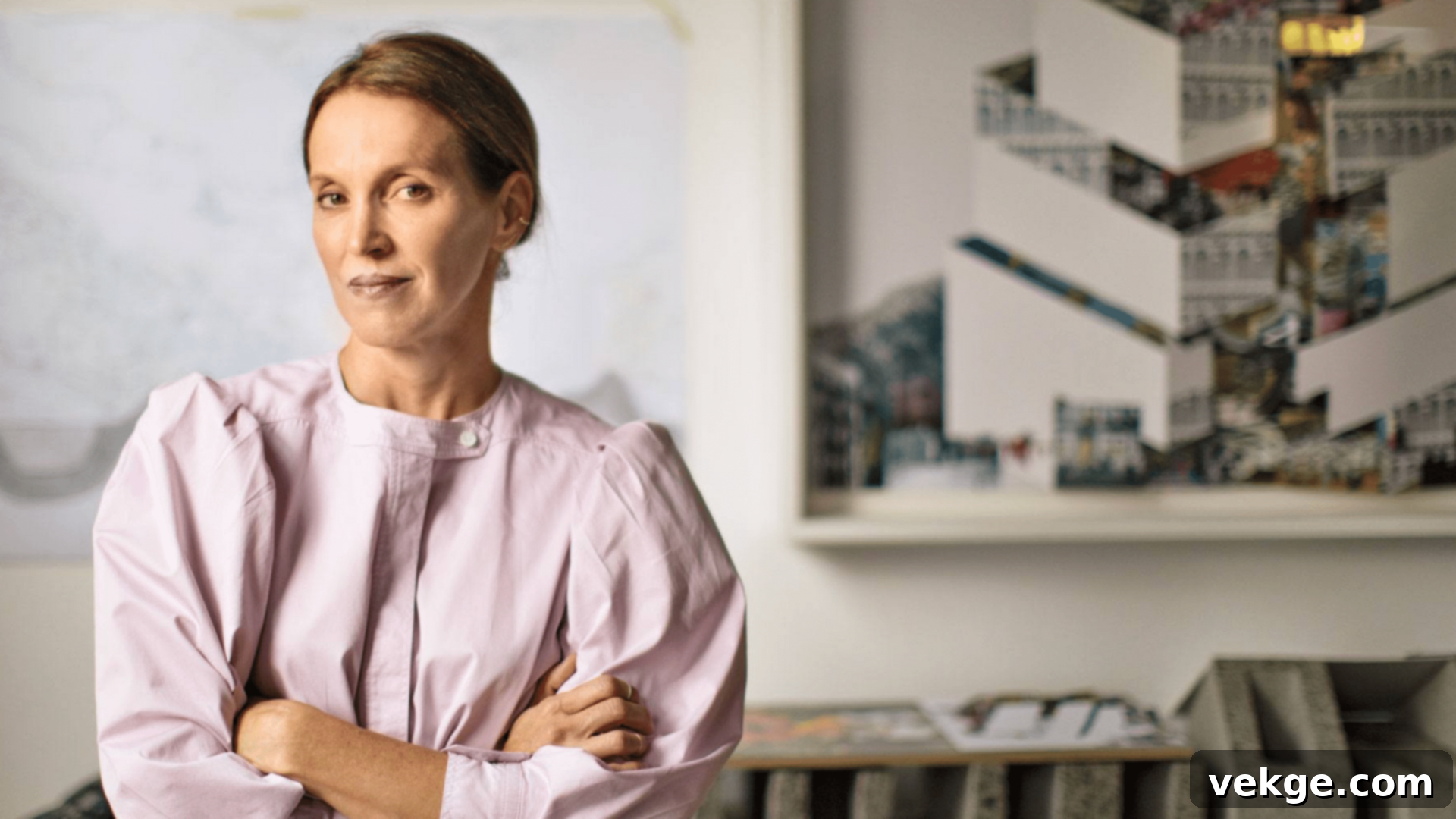
Tatiana Bilbao stands as a leading voice among contemporary Mexican architects, celebrated for her holistic approach that integrates social responsibility with environmental sensitivity. Her designs are deeply rooted in understanding the local context, using vernacular materials and construction techniques to create sustainable and community-focused architecture. She is particularly known for her innovative solutions in affordable housing.
Most Famous Works:
- Casa Ventura: A house designed to seemingly emerge from its hillside, blurring the lines between built structure and natural landscape.
- Ajijic House: A residence that blends seamlessly into its wooded surroundings, emphasizing natural ventilation and local materials.
- Punta de Mita Chapel: A minimalist, open-air structure that connects visitors intimately with the natural environment.
3. Pedro Ramírez Vázquez (1919-2013)
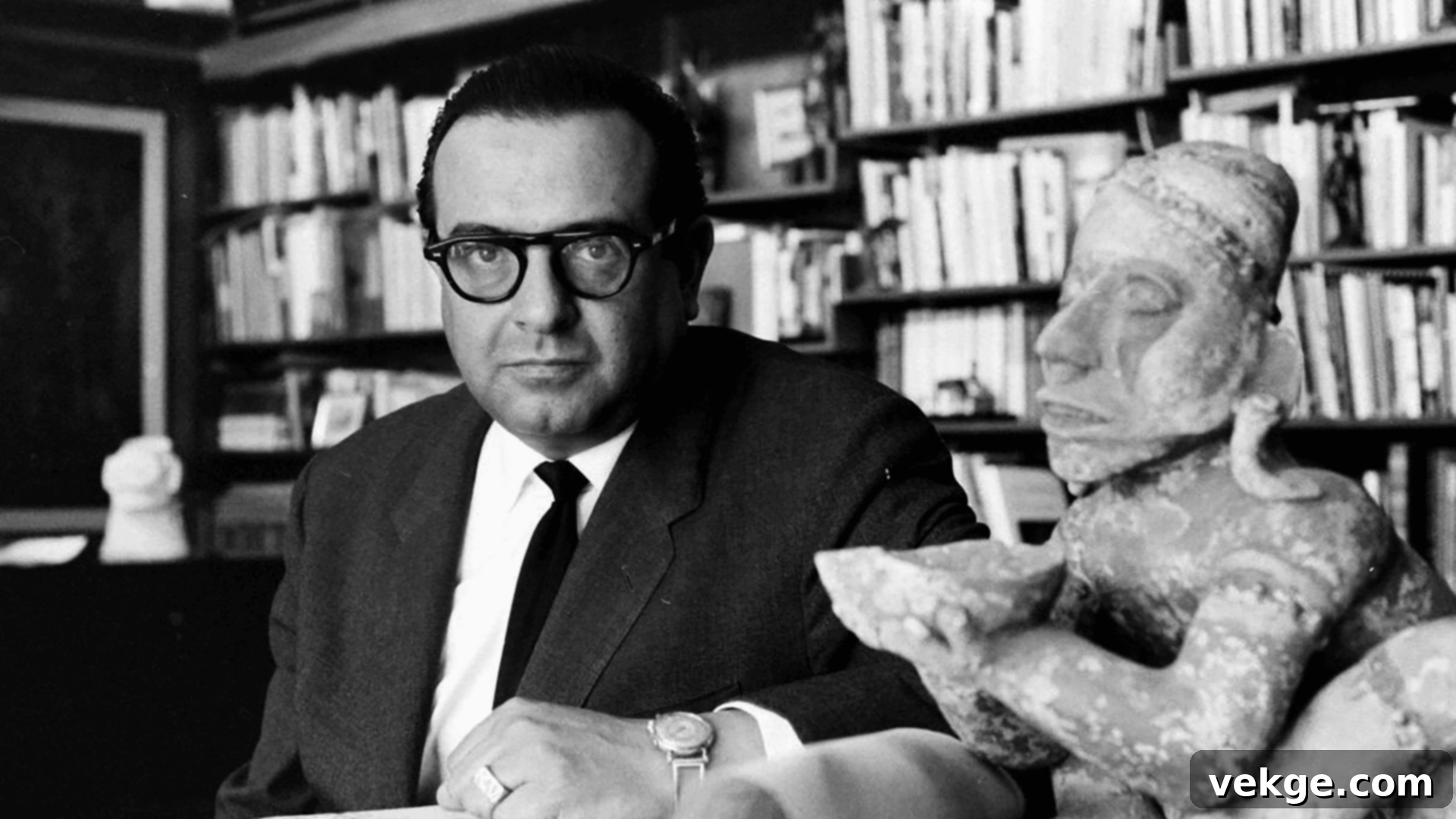
Pedro Ramírez Vázquez was a monumental figure responsible for some of Mexico’s most significant public and cultural institutions. His architectural legacy is characterized by grand scale, clarity of form, and a deep reverence for Mexican history and identity, presented to millions of visitors annually. His structures are designed to be enduring symbols of national pride and functionality.
Most Famous Works:
- Estadio Azteca: An iconic stadium that has hosted two FIFA World Cup finals, renowned for its massive scale and impressive engineering.
- National Museum of Anthropology: A masterpiece of modern Mexican architecture, housing the nation’s most precious cultural treasures within a dramatic, open-air design.
- Mexican Pavilion at Expo 67 (Montreal): An innovative design that showcased Mexican culture and design prowess on the international stage.
4. Frida Escobedo
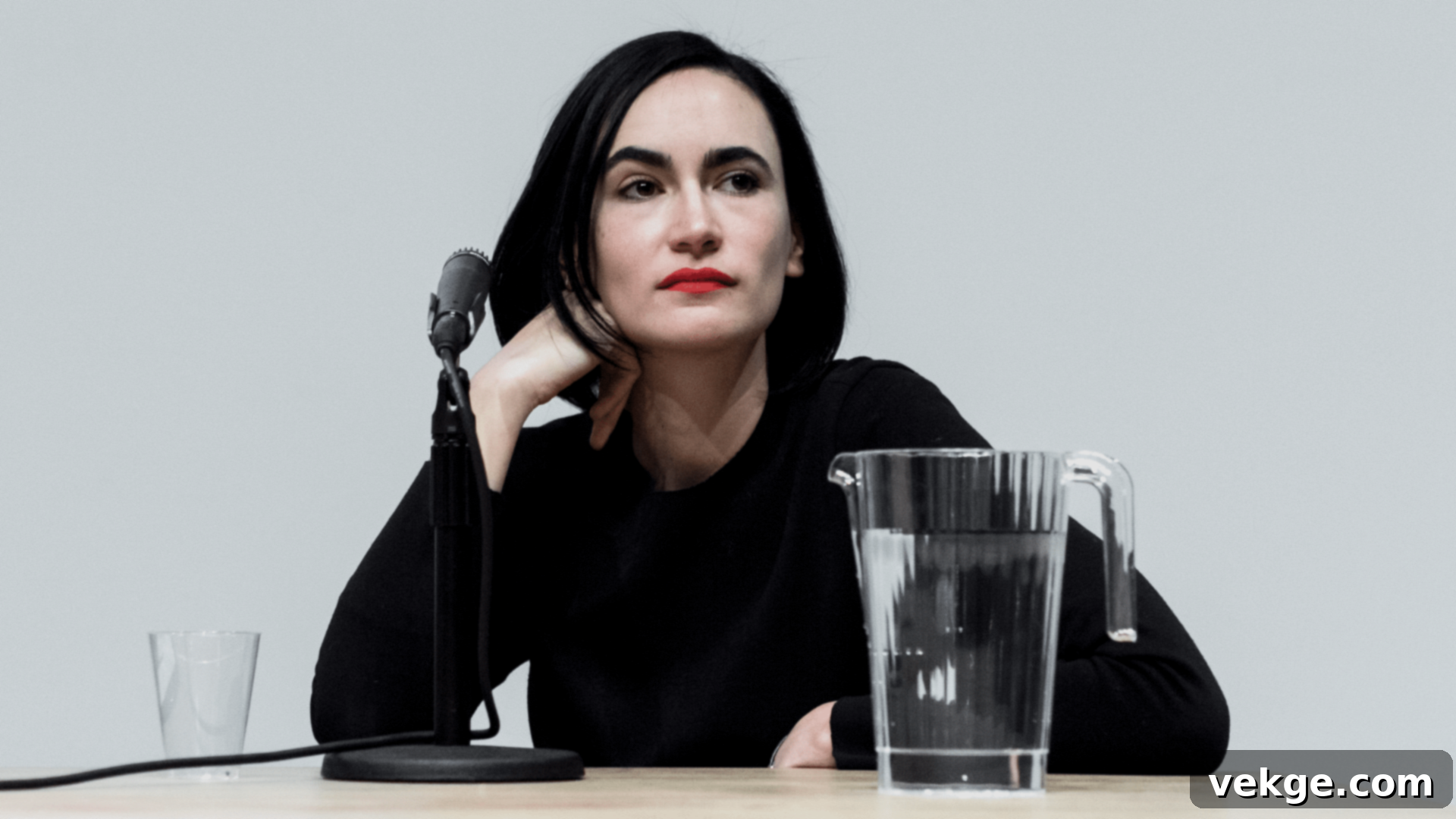
Frida Escobedo is a rising star in the architectural world, celebrated for her ability to fuse traditional Mexican building techniques with contemporary, innovative concepts. Her work often recontextualizes humble, readily available materials like concrete blocks and local stone, transforming them into sophisticated and visually compelling designs that challenge conventional notions of luxury.
Most Famous Works:
- La Tallera Siqueiros (Cuernavaca): A renovation and expansion of artist David Alfaro Siqueiros’ former studio, featuring pivoting walls and an open courtyard.
- Casa Negra (Mexico City): A striking residence utilizing dark materials and geometric precision to create a private, introspective space.
- Serpentine Pavilion 2018 (London): A temporary structure that introduced Mexican design principles – such as the celosía (breeze wall) and courtyard – to a global audience in Hyde Park.
5. Teodoro González de León (1926-2016)
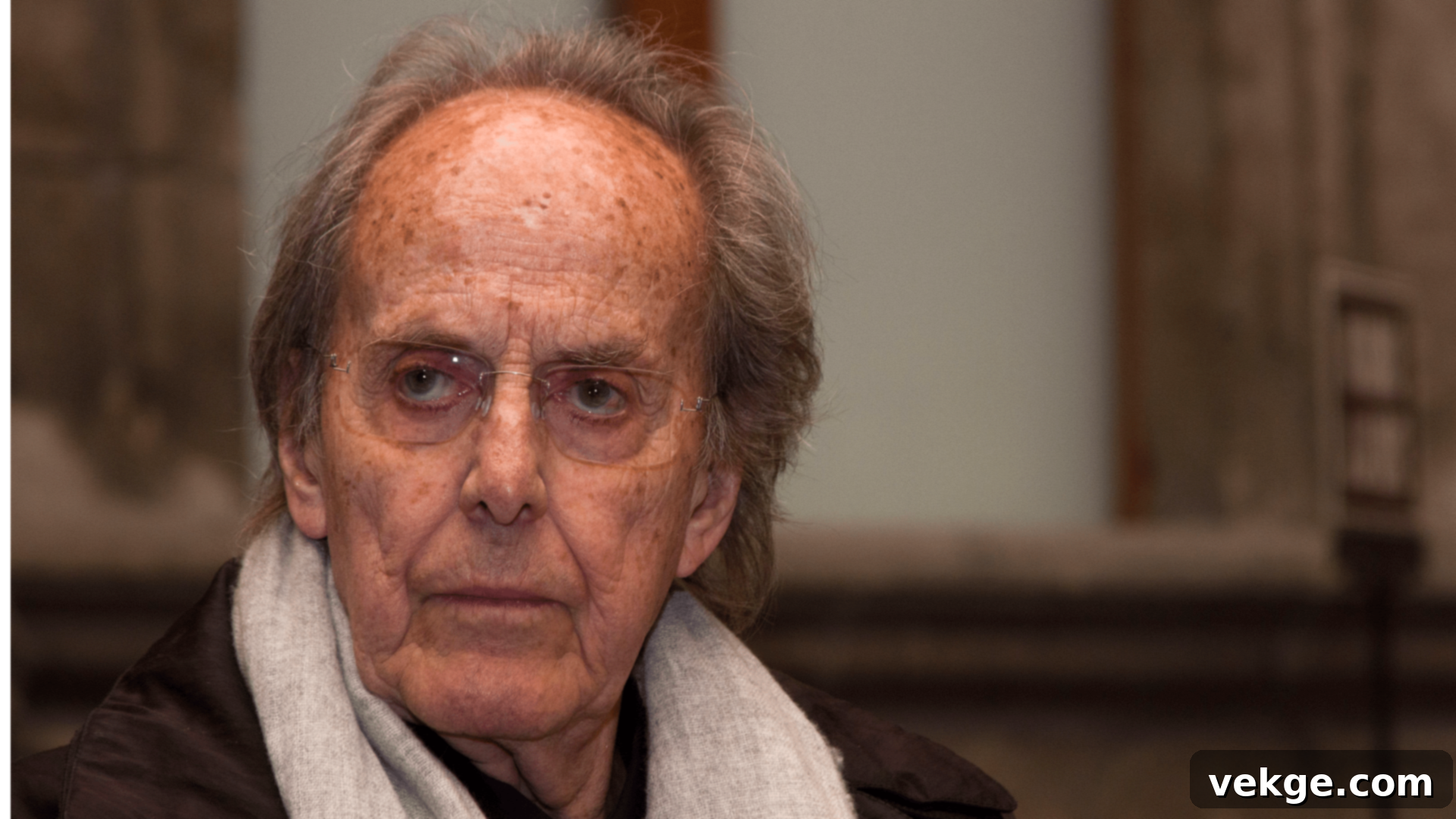
Teodoro González de León was a master of monumentalism, creating imposing and distinctly textured concrete buildings that command attention within the urban fabric of Mexico City. His architectural signature involved the use of massive, rough-hewn concrete surfaces, often treated with a unique texture, which imbue his structures with a sense of strength, solidity, and timeless permanence. His designs feature grand, open interior spaces that play dramatically with light and shadow.
Most Famous Works:
- Auditorio Nacional (National Auditorium): Mexico City’s premier concert and event venue, characterized by its imposing concrete form.
- Museo Tamayo Arte Contemporáneo (Tamayo Museum): A striking modernist building with massive walls and dramatic internal volumes designed for contemporary art.
- Museo de Arte Contemporáneo Internacional Rufino Tamayo: His skill with light and shadow is evident in this iconic art institution.
6. Fernando Romero
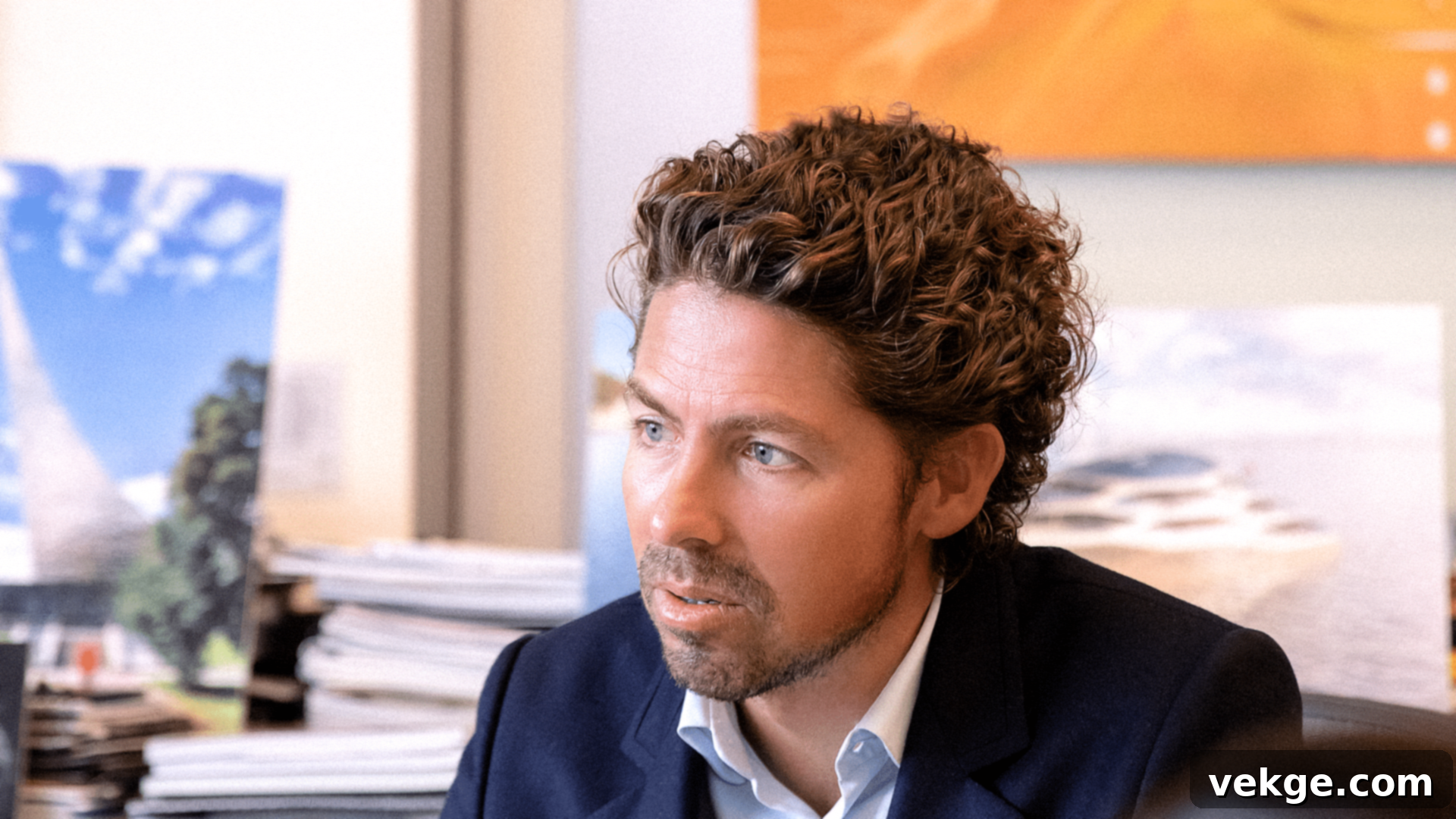
Fernando Romero represents the cutting edge of contemporary Mexican architecture, leveraging advanced digital design tools to create complex, often sculptural forms. His buildings are characterized by their technical sophistication and artistic audacity, pushing the boundaries of what is possible through innovative structural solutions and material usage. Romero’s work often integrates technology with bold aesthetic statements.
Most Famous Works:
- Museo Soumaya (Plaza Carso): An iconic, curvaceous silver structure housing a vast private art collection, known for its shimmering, tessellated facade.
- New Mexico City International Airport (design proposal): A visionary plan for a major infrastructure project, showcasing his ambitious approach to urban scale.
- Inbursa Aquarium: Mexico City’s first major aquarium, featuring a striking contemporary design.
7. Félix Candela (1910-1997)
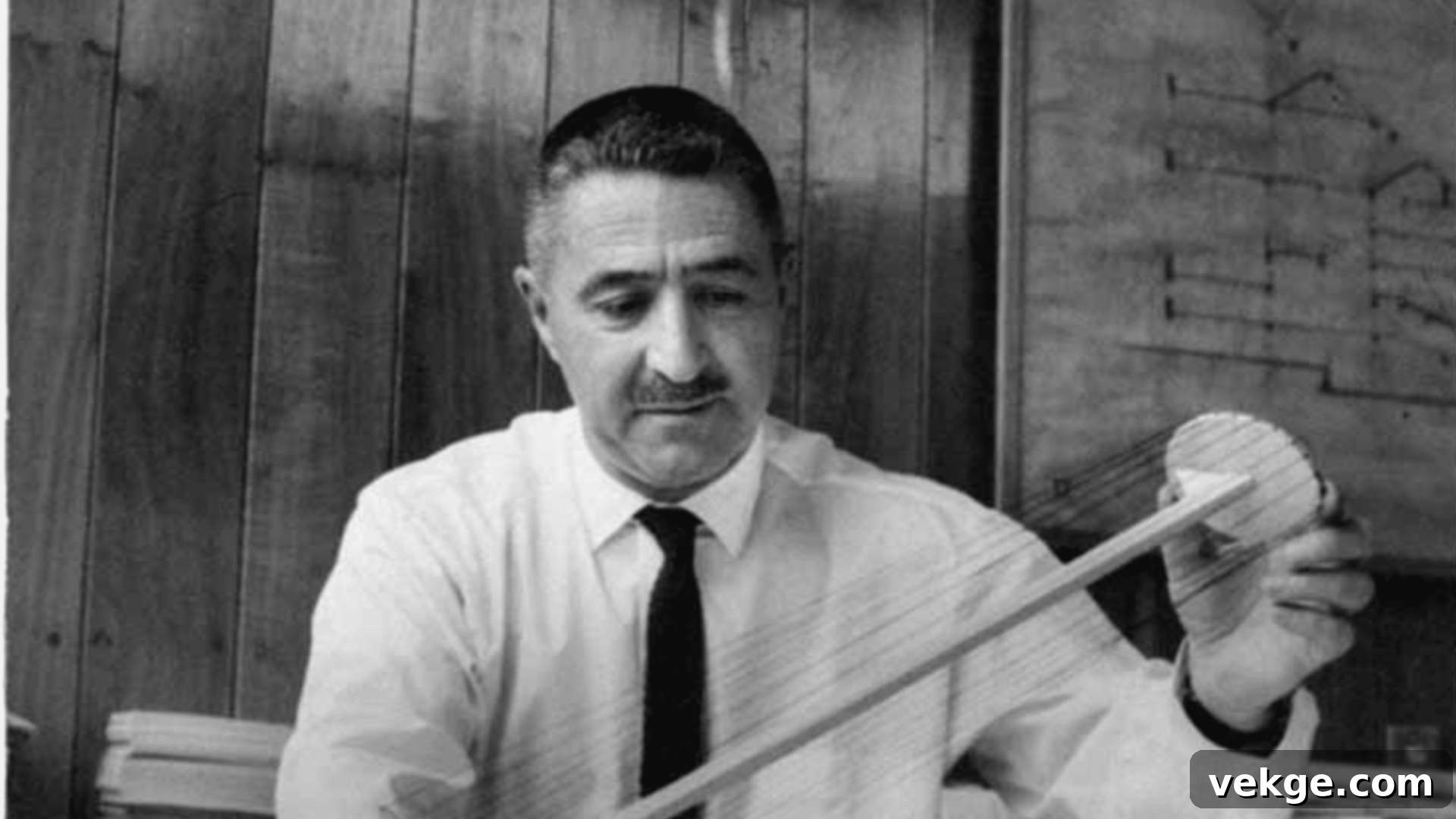
Félix Candela was a structural engineer and architect renowned for his mastery of thin-shell concrete structures, which appear to defy gravity with their impossibly light forms. His innovative approach utilized minimal material to enclose vast spaces, creating roofs that curve elegantly like waves, inverted umbrellas, or petals. His designs are celebrated for their structural elegance and poetic expression of form.
Most Famous Works:
- Los Manantiales Restaurant (Xochimilco): Featuring an iconic, multi-lobed concrete shell roof resembling an opening flower.
- Church of Our Lady of the Miraculous Medal (Mexico City): A sacred space defined by dramatic, soaring concrete arches and vaults.
- Cosmic Rays Pavilion at UNAM (Universidad Nacional Autónoma de México): A pioneering thin-shell concrete laboratory that showcases his engineering genius.
8. Ricardo Legorreta (1931-2011)
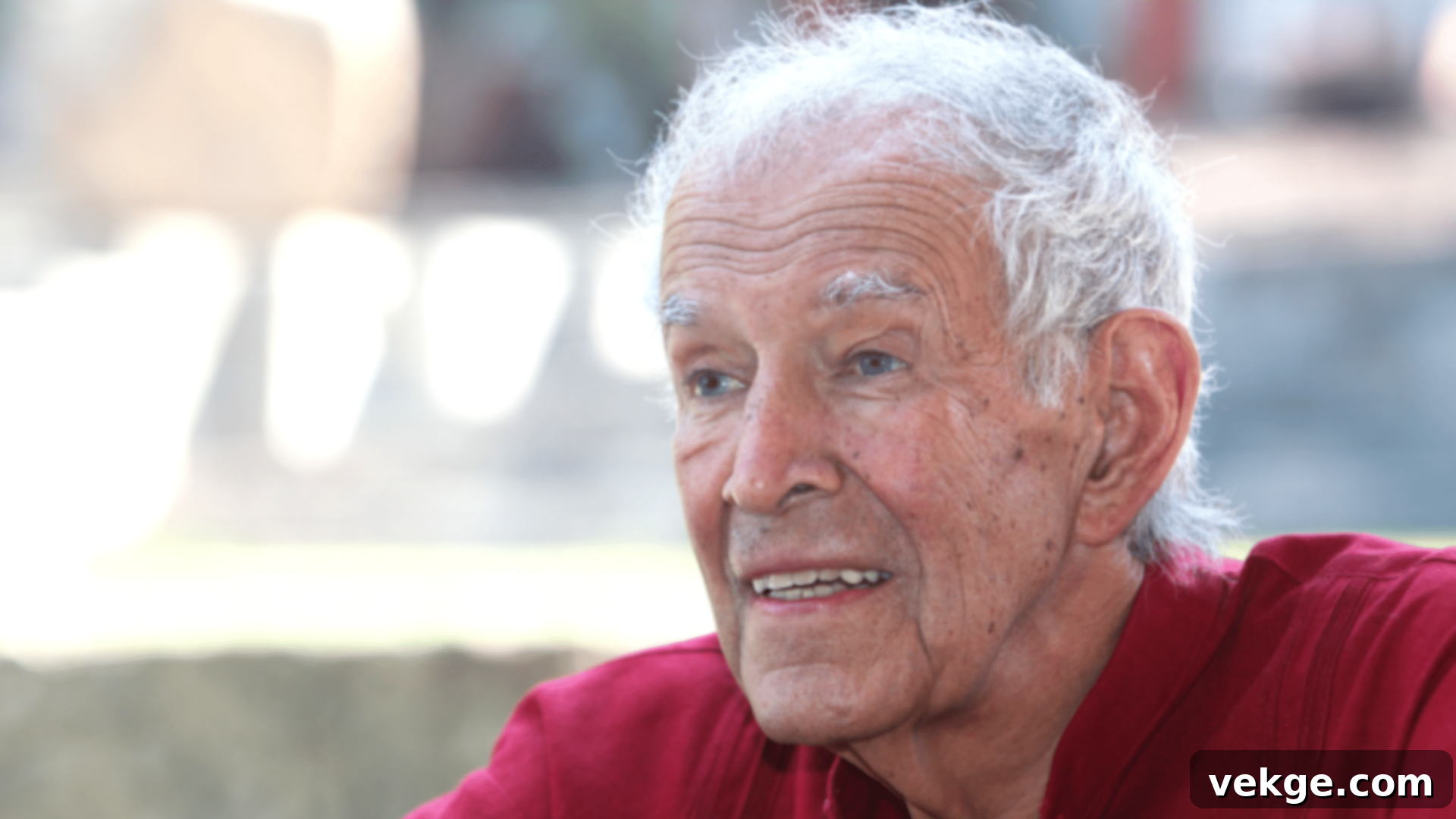
Ricardo Legorreta developed a distinct architectural language instantly recognizable for its powerful use of color and robust, simple forms. He boldly incorporated vibrant hues like fuchsia, purple, and intense yellow into his buildings at a time when many of his contemporaries favored more muted palettes. His designs emphasize strong geometric shapes, creating dramatic contrasts of light and shadow, and a profound sense of place often inspired by traditional Mexican haciendas.
Most Famous Works:
- Hotel Camino Real (Mexico City): A landmark luxury hotel characterized by its iconic pink walls and serene courtyards.
- Biblioteca Central de México (National Library of Mexico): A prominent public building distinguished by its colorful facades and powerful geometric volumes.
- Papalote Museo del Niño (Children’s Museum, Mexico City): A playful and vibrant design that engages young visitors with its inviting forms and colors.
9. Juan O’Gorman (1905-1982)
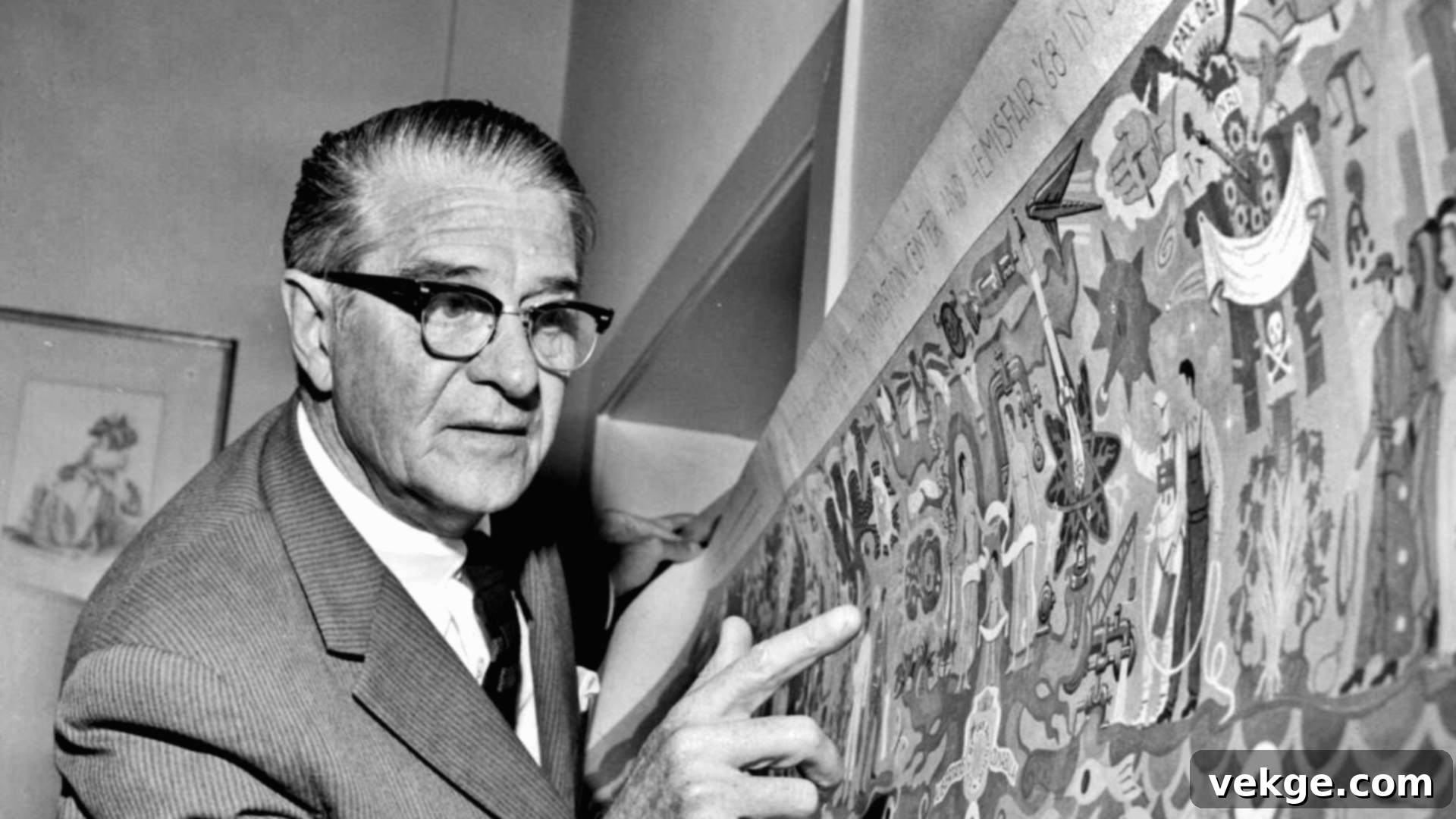
Juan O’Gorman was a multi-talented artist and architect who seamlessly blended modern functionalism with a deep appreciation for Mexican art and history. His work often features intricate, colorful stone mosaics that narrate stories of Mexico’s rich past and vibrant culture. He championed an architecture that was both utilitarian and deeply expressive of national identity, integrating art directly into the building’s fabric.
Most Famous Works:
- Casa Estudio Diego Rivera y Frida Kahlo: A pioneering functionalist design that served as the studios and homes for the celebrated artists, connected by a bridge.
- Casa O’Gorman (his own home): An experimental residence showcasing his unique artistic vision and integration of natural elements.
- Central Library at UNAM: Adorned with colossal, breathtaking mosaic murals depicting Mexico’s historical and cultural narratives, making it an architectural icon.
10. Mario Pani (1911-1993)
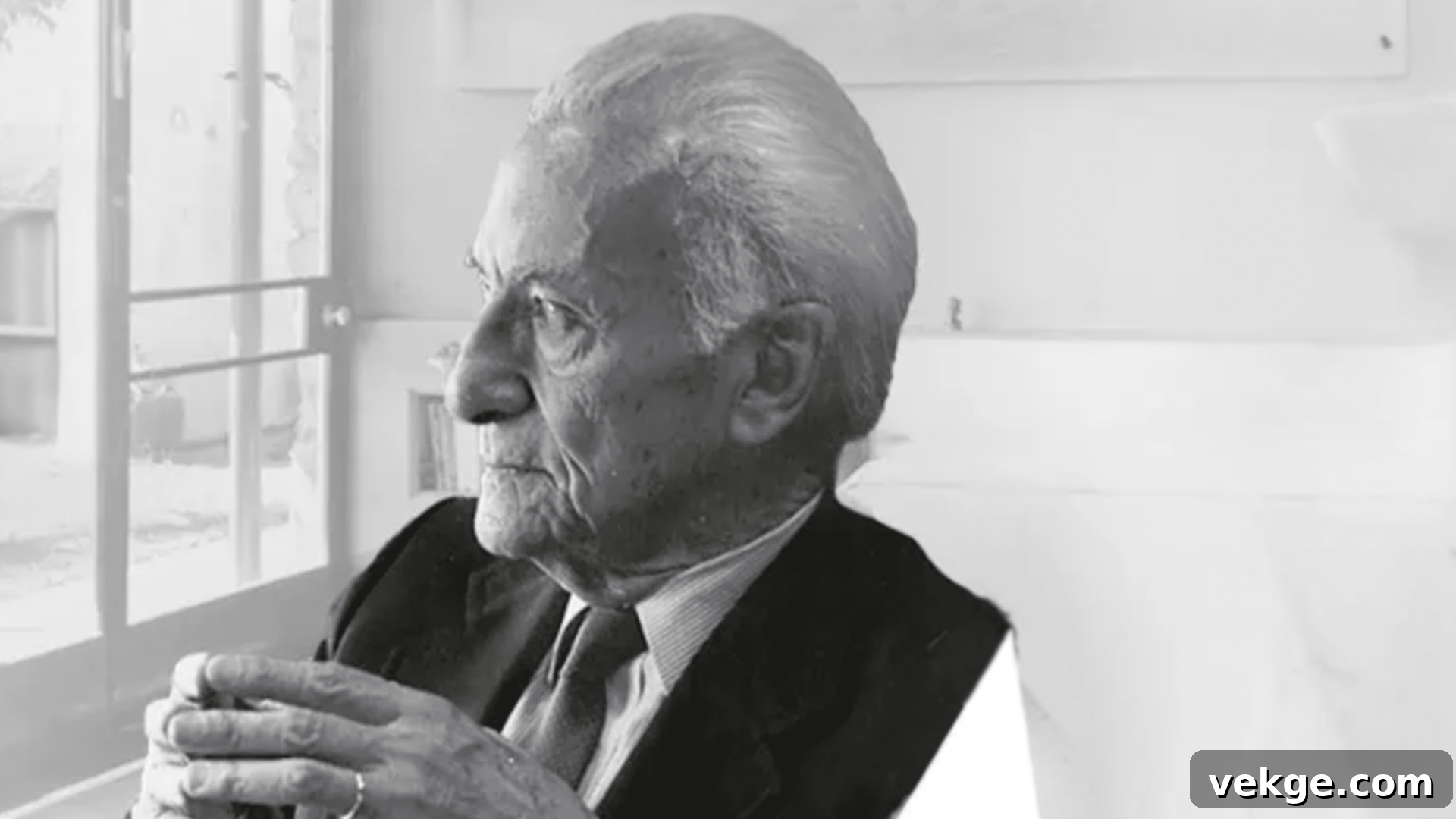
Mario Pani was a transformative figure in Mexican urban planning and architecture, instrumental in shaping the modern landscape of Mexico City. He pioneered solutions for affordable, high-density housing, efficiently utilizing urban space to address the needs of a rapidly growing population. Pani introduced the concept of large-scale apartment complexes to Mexico, revolutionizing urban living and challenging the traditional single-family home model.
Most Famous Works:
- Multifamiliar Presidente Alemán: Mexico’s first large-scale apartment complex, a landmark in social housing and urban planning.
- Ciudad Satélite: A visionary planned community designed with comprehensive amenities for its residents, pioneering suburban development in Mexico.
- Torre Latinoamericana (contribution to urban plan): Though not solely his design, his urban planning philosophy influenced the context of such iconic skyscrapers.
11. Juan Sordo Madaleno (1916-1985)
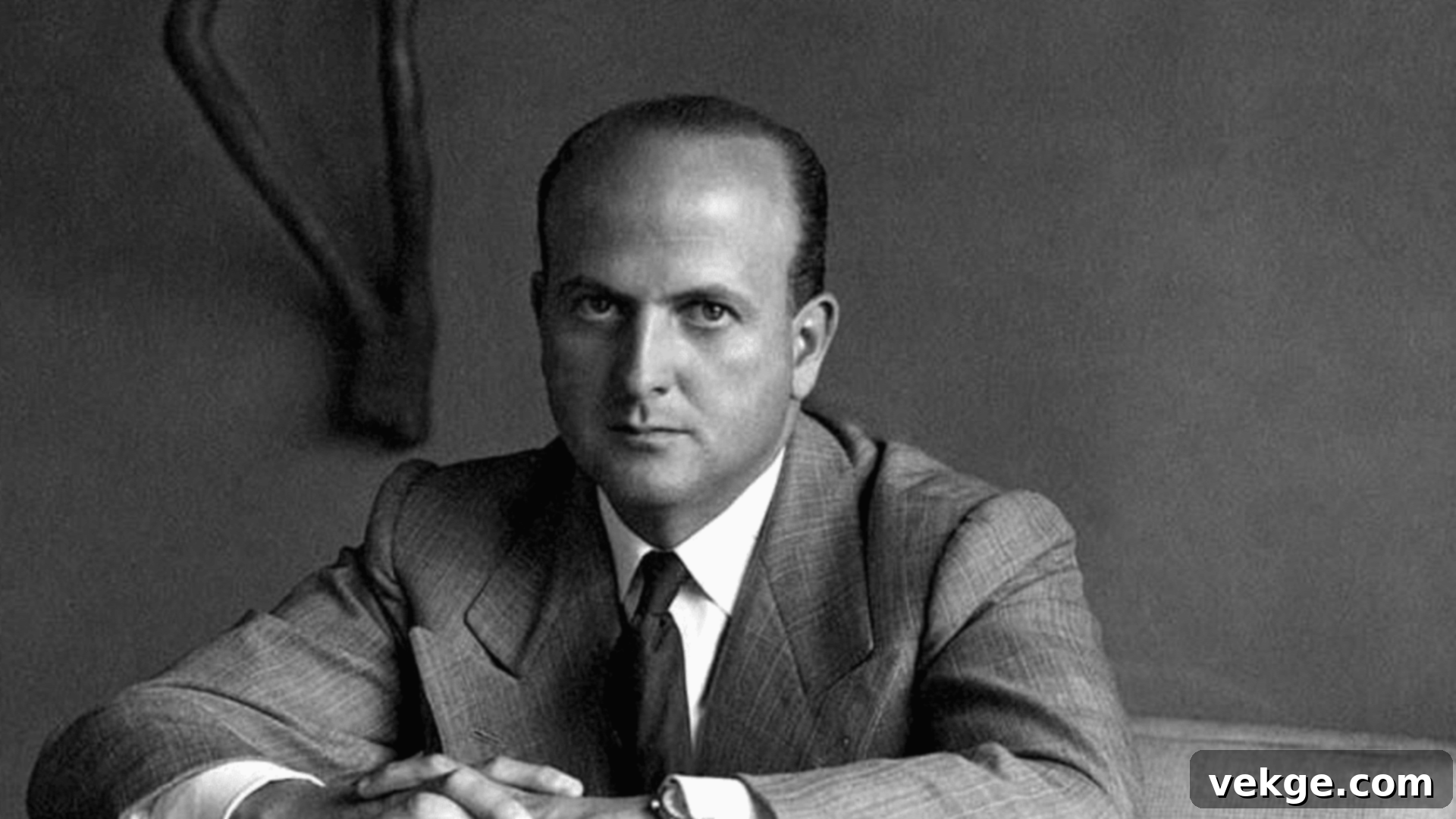
Juan Sordo Madaleno was a prolific architect who largely defined the aesthetics of modern commercial and hospitality buildings in Mexico City. His work introduced an international, sophisticated style to Mexican business and leisure architecture, seamlessly blending functionality with elegant design. He created spaces that were both highly practical for their commercial purposes and remarkably pleasant for their users, often incorporating lush landscaping and luxurious finishes.
Most Famous Works:
- Hotel María Isabel (now Sheraton Mexico City Maria Isabel): A landmark luxury hotel that set new standards for hospitality design in the city.
- Perisur Shopping Mall: One of Mexico’s first modern, large-scale shopping centers, influencing retail architecture.
- Palacio de Justicia (Palace of Justice): A notable public building showcasing his skill in integrating large-scale public functions with refined aesthetics.
12. Mario Schjetnan

Mario Schjetnan is a distinguished landscape architect and urban designer, specializing in the creation of public parks and outdoor environments that harmonize with nature. Rather than focusing on buildings, his expertise lies in designing green spaces that offer urban dwellers vital connections to the outdoors, promoting ecological balance and community interaction. His projects often emphasize water conservation and the use of native Mexican flora, contributing to sustainable urban ecosystems.
Most Famous Works:
- Chapultepec Forest Restoration (Mexico City): A monumental project to revitalize and improve Mexico City’s largest and most significant urban park.
- Parque Tezozómoc (Mexico City): An innovative park designed to recreate the historical landscape of the Valley of Mexico, offering both recreation and environmental education.
- Parque de los Venados (Mexico City): A people-friendly urban park, exemplifying his commitment to accessible public green spaces.
13. Enrique Norten
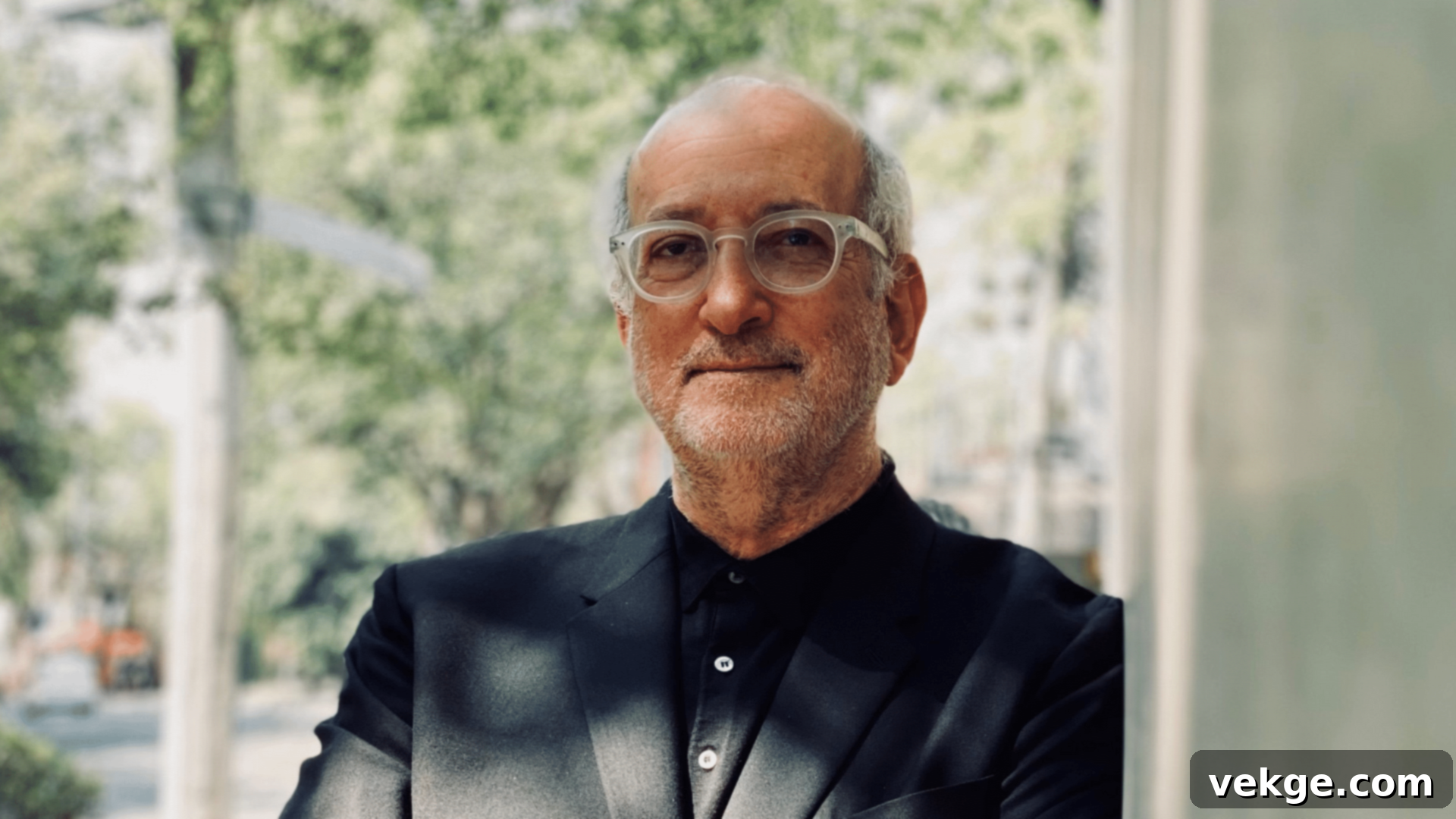
Enrique Norten is an internationally recognized architect whose designs possess a sleek, modern aesthetic that feels at home in any global city, while still retaining a subtle Mexican sensibility. His work is characterized by clean lines, sharp forms, and a forward-thinking approach to materials and technology. Norten skillfully integrates contemporary construction techniques with an understanding of spatial dynamics informed by Mexican architectural principles, creating buildings that are both sophisticated and contextually aware.
Most Famous Works:
- Torre Reforma (Mexico City): One of Mexico City’s tallest and most structurally innovative skyscrapers, celebrated for its unique triangular form and seismic resilience.
- Hotel Habita (Mexico City): A groundbreaking design that redefined boutique hotel aesthetics in Mexico with its minimalist glass facade and vibrant interior.
- Lincoln Road Parking Garage (Miami Beach): A striking structure that brings a sophisticated, urban Mexican design sensibility to an American context.
14. Michel Rojkind

Michel Rojkind is an architect celebrated for his playful, expressive, and often unexpected designs that consistently surprise and delight. He masterfully combines architectural rigor with a sense of fun and dynamism, creating buildings that are both formally audacious and highly functional. His projects frequently feature curvilinear forms, unconventional material applications, and innovative public spaces designed to foster community interaction and vibrant urban life.
Most Famous Works:
- Nestlé Chocolate Museum (Toluca): A striking, vibrant red structure shaped like an unfolding ribbon, designed to engage visitors in a sensory experience.
- Cineteca Nacional Siglo XXI (National Film Archive and Film Institute, Mexico City): A revitalized cultural complex with a distinctive, walkable rooftop canopy and dynamic public spaces.
- Liverpool Department Store (Insurgentes, Mexico City): An eye-catching retail building distinguished by its sculpted, metallic exterior and fluid forms.
15. Pedro E. Guerrero (1917-2012)
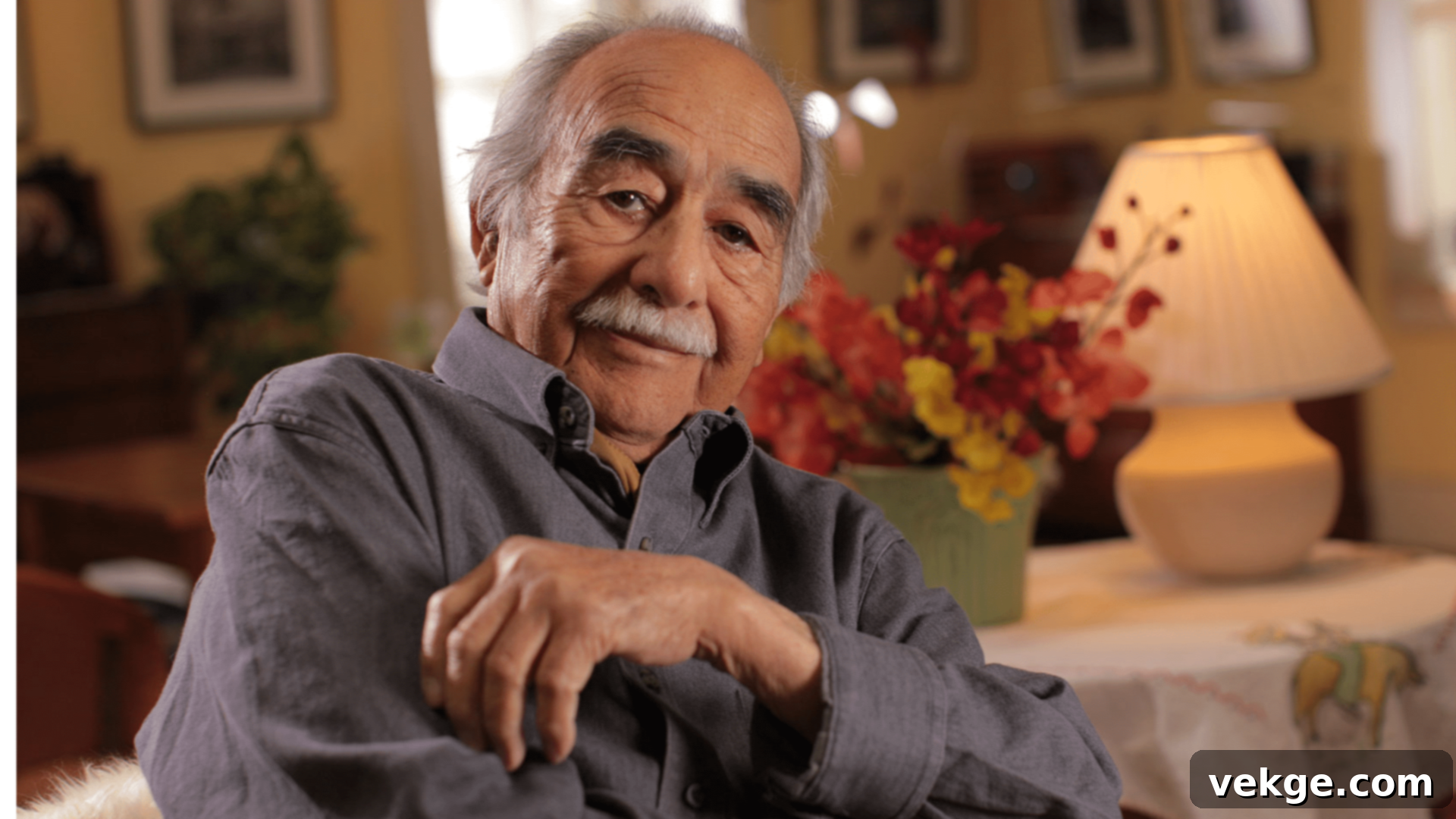
While primarily known as the iconic photographer for Frank Lloyd Wright, Alexander Calder, and Louise Nevelson, Pedro E. Guerrero also made significant contributions as an architect. He applied the lessons learned from his close collaboration with Wright—particularly regarding organic architecture and the integration of buildings with their natural surroundings—to his own designs in Mexico, infused with a distinct Mexican sensibility regarding materials and light.
Most Famous Works:
- Residences in Mexico City: Blending modern principles with traditional Mexican materials and climatically responsive design.
- Private commissions: Focused on creating functional and beautiful living spaces that connect indoor and outdoor environments seamlessly.
- Designs incorporating natural light: Emphasizing passive cooling and ventilation strategies suited to Mexico’s climate.
16. Enrique Del Moral (1906-1987)
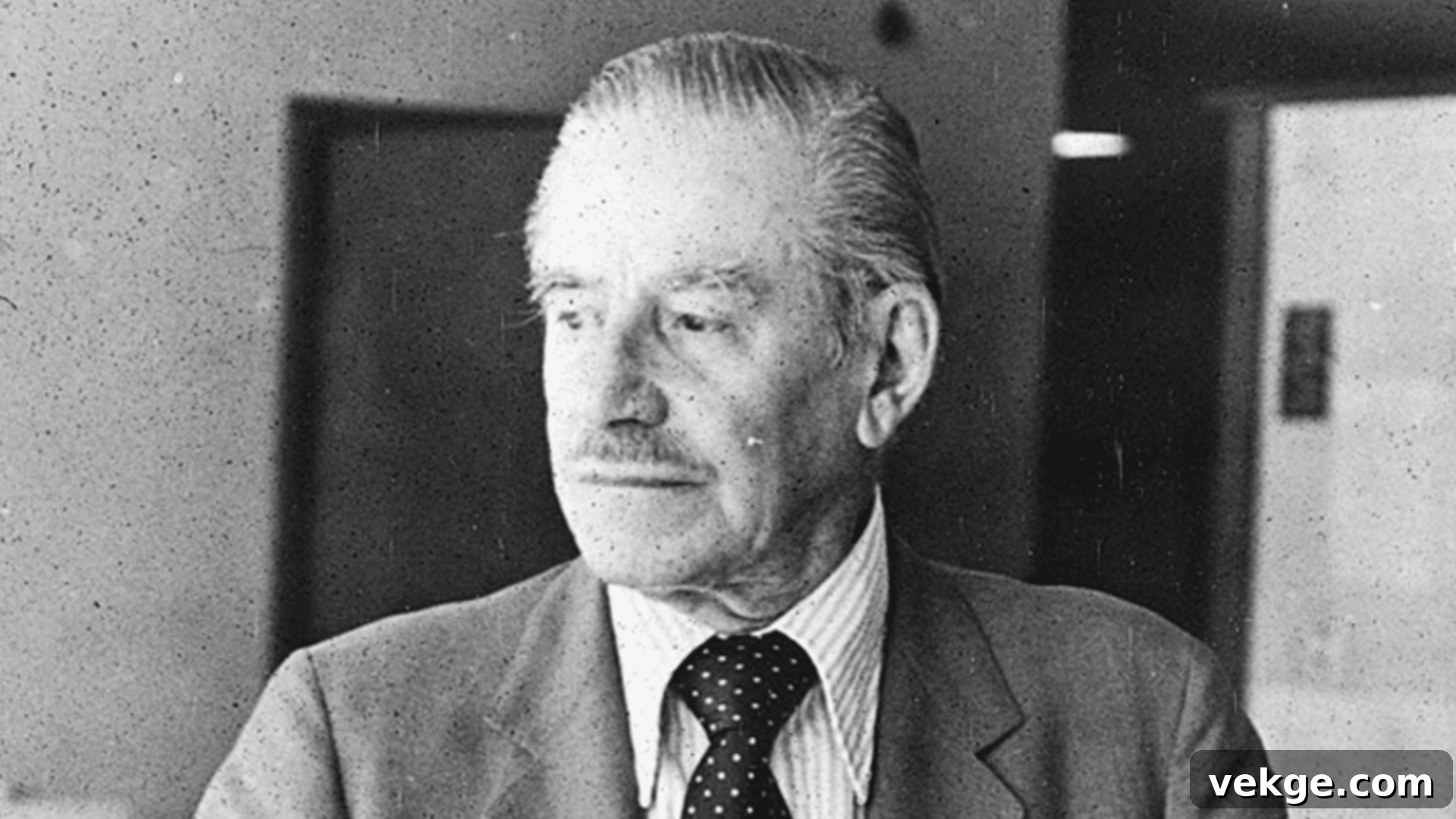
Enrique Del Moral was a foundational figure in the development of modern Mexican architecture, playing a crucial role in shaping its theoretical underpinnings and practical applications. He contributed to the design of some of Mexico’s most significant educational and cultural institutions. Del Moral advocated for an architecture that was simple, highly functional, and deeply contextual, reflecting the specific needs and unique character of its Mexican location.
Most Famous Works:
- Central Library at UNAM (co-designer with Juan O’Gorman and Gustavo Saavedra): A key contributor to this iconic structure, demonstrating the integration of art and architecture.
- University City (Ciudad Universitaria) at UNAM (master plan contributor): Played a vital role in the comprehensive planning and design of this monumental campus.
- Various residences and public buildings: Exemplifying his commitment to modern functionalism with a Mexican touch.
17. Ruth Rivera Marín (1927-1969)

Ruth Rivera Marín was a pioneering force, becoming one of Mexico’s first prominent female architects and making significant contributions to both design and architectural education. As the daughter of legendary painter Diego Rivera, she carved out her own distinguished path, blending her artistic heritage with rigorous technical expertise in her architectural and urban planning projects. She was also deeply committed to the social function of architecture.
Most Famous Works:
- National Museum of Anthropology (collaborator): Her crucial contributions aided in the design and execution of this cultural masterpiece.
- Planning and academic work at the National Institute of Fine Arts (INBA): Advocated for and developed educational programs for aspiring architects.
- Research on pre-Hispanic and popular architecture: Informing a more culturally rooted modern Mexican design.
18. José Villagrán García (1901-1982)
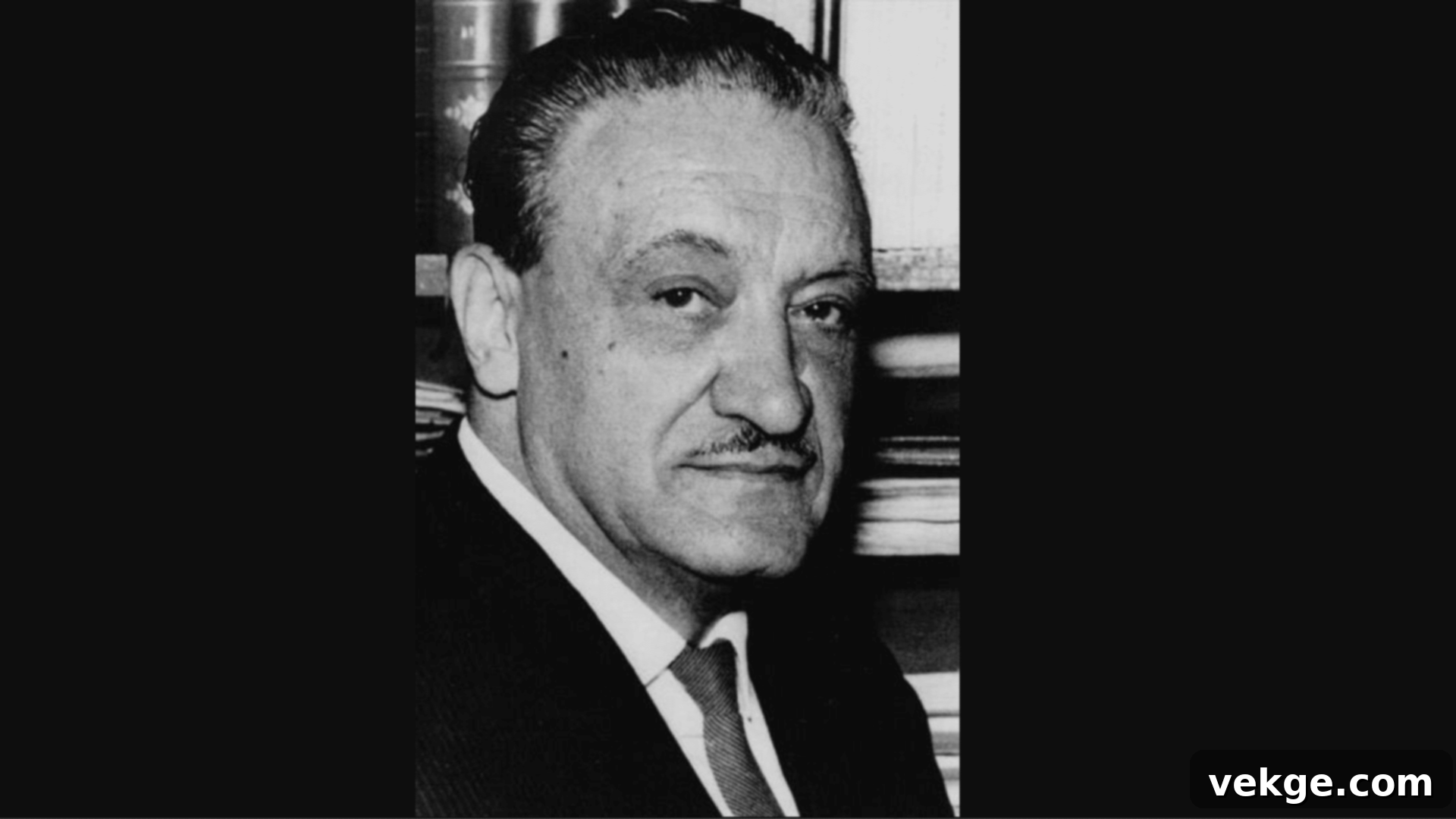
José Villagrán García is considered the intellectual patriarch of modern Mexican architecture. As an influential educator and theorist, he established many of the foundational principles for the modern movement in Mexico, profoundly influencing generations of leading architects through his teaching and seminal writings. He believed in an architecture that was rational, functional, and capable of solving real-world problems while retaining its aesthetic integrity and beauty.
Most Famous Works:
- National Stadium at Ciudad Universitaria (co-designer): A key sporting venue within the iconic university campus.
- Hospital for Tuberculosis Patients in Huipulco: An early example of functionalist healthcare architecture in Mexico.
- Multifamily housing projects: Instrumental in developing solutions for modern urban living in Mexico City.
19. Alberto Kalach
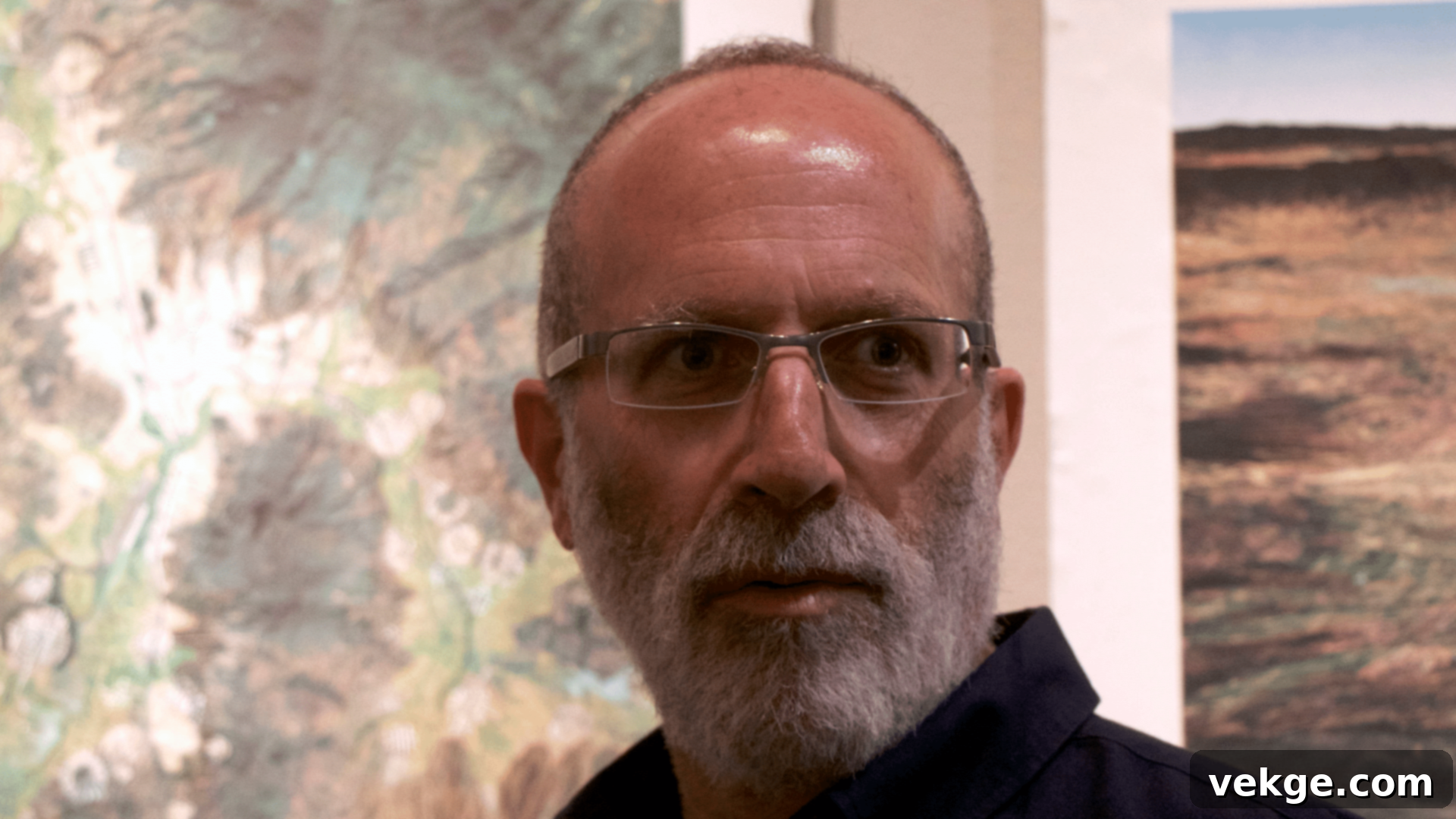
Alberto Kalach is an architect deeply committed to integrating natural environments into urban design, advocating for a regenerative relationship between cities and nature. His innovative projects frequently incorporate extensive gardens, green spaces, and water features, blurring the boundaries between the built and natural worlds. Kalach’s philosophy centers on creating sustainable, breathable cities and buildings that contribute positively to ecological health.
Most Famous Works:
- Biblioteca Vasconcelos (Vasconcelos Library, Mexico City): A monumental “megalibrary” celebrated for its industrial aesthetic, transparent volumes, and dramatic hanging gardens.
- Casa GDL: A residence designed to bring the outside in, with lush courtyards and seamless connections to nature.
- Torre 41: An environmentally conscious office tower that exemplifies sustainable urban development.
20. Javier Senosiain
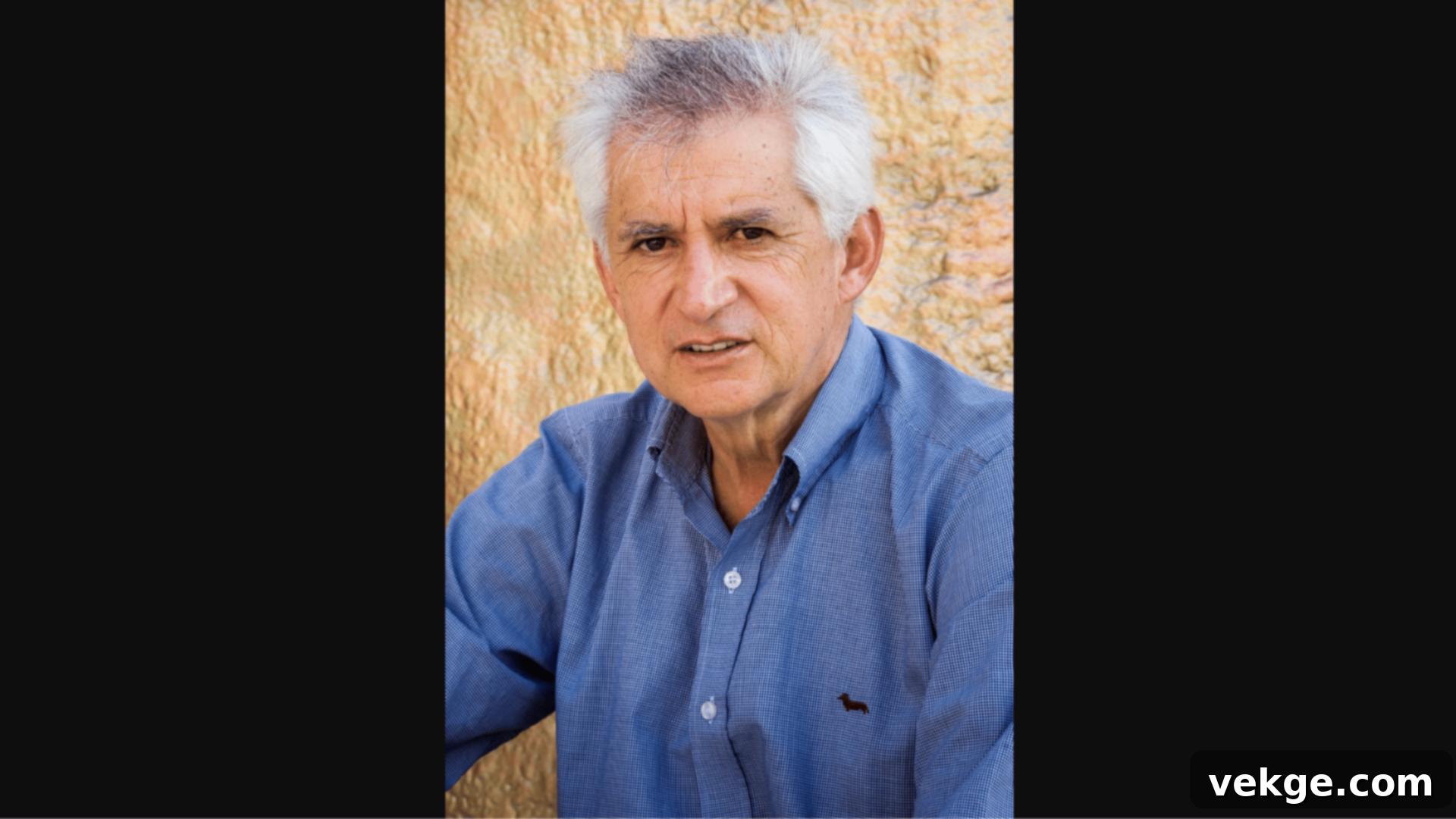
Javier Senosiain is a leading exponent of organic architecture in Mexico, creating extraordinary buildings that seem to emerge directly from the earth, mimicking natural forms. His unique designs often resemble shells, animals, or plants, crafted from ferro-cement to create fluid, sculptural living spaces. Senosiain’s homes offer a truly immersive experience, inviting inhabitants to live within a work of art that feels intrinsically connected to its environment.
Most Famous Works:
- Nautilus House: An iconic residence shaped like a giant seashell, seamlessly blending human habitation with natural form.
- Shark House: A whimsical and functional home featuring architectural elements inspired by marine life.
- Flower House: A unique dwelling designed to resemble a blooming flower, demonstrating his mastery of organic shapes.
21. Agustín Hernández (1924-2022)
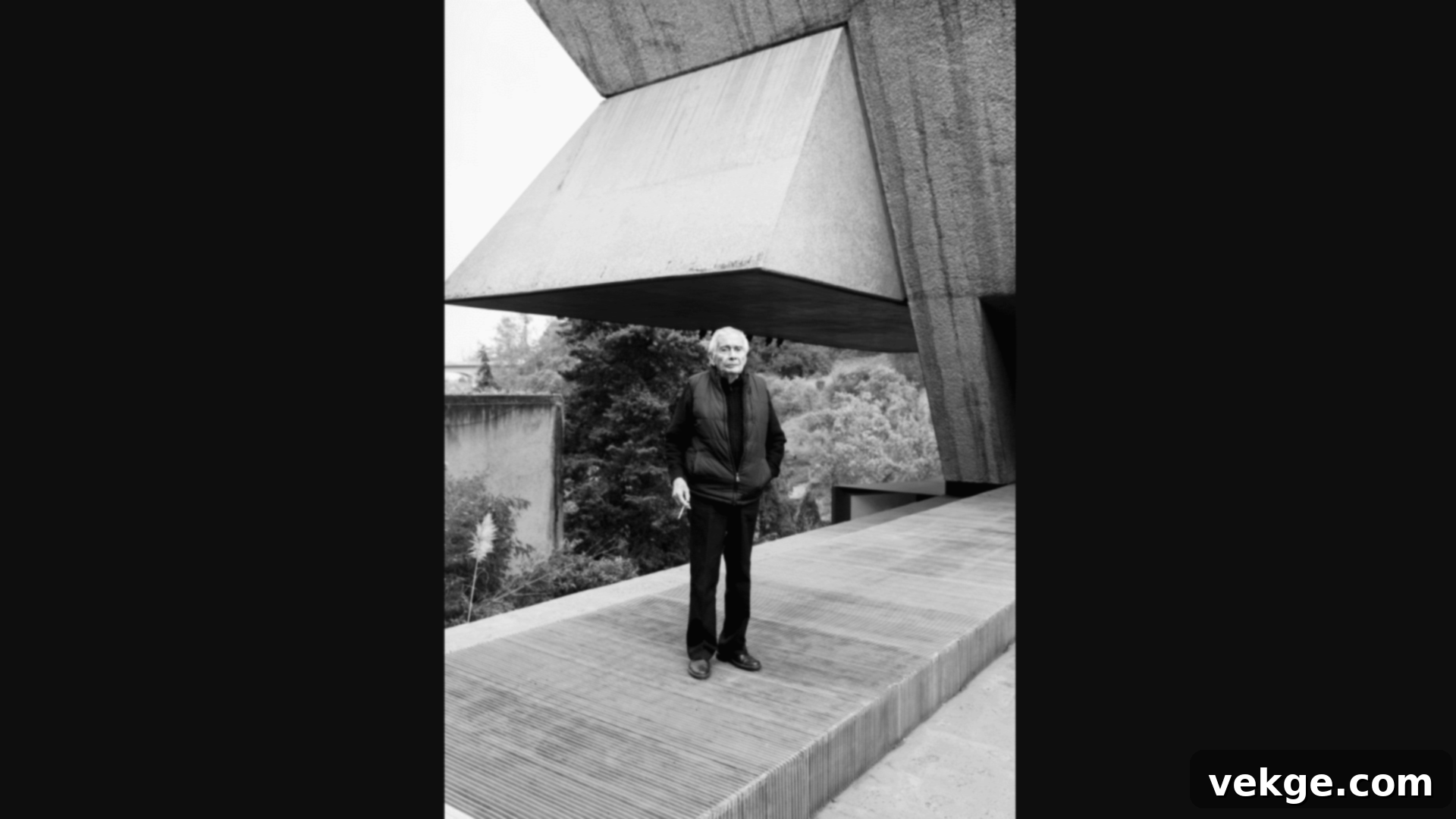
Agustín Hernández was an architect renowned for his powerful synthesis of ancient pre-Hispanic Mexican symbols and futuristic, often brutalist, designs. His buildings frequently evoke the majesty of ancient temples or the stark lines of spaceships, creating dramatic and unforgettable forms that distinctly stand out on the urban skyline. Hernández’s work is characterized by monumental scale, complex geometries, and a profound sense of cultural symbolism.
Most Famous Works:
- Heroic Military College (Colegio Militar): A monumental complex that resembles a modern pyramid, integrating symbolic pre-Hispanic forms with contemporary concrete structures.
- Meditation Center (Mexico City): A dramatically balanced structure perched on a hillside, offering panoramic views and a serene atmosphere.
- His own studio (Casa Hernández): A unique residence resembling a tree house or a spacecraft, ingeniously cantilevered above Mexico City.
Global Reverberations: The Enduring Influence of Mexican Architectural Genius
The distinctive characteristics of Mexican architecture have profoundly influenced global design, extending far beyond its geographical boundaries. The bold use of color, the ingenious manipulation of natural light, and the innovative blend of ancient wisdom with modern sensibilities have provided a compelling alternative to prevailing architectural trends, inspiring designers worldwide.
Mexican architects have introduced fresh perspectives that many international designers now integrate into their own practices:
- Bold and Expressive Color Palettes: Challenging the minimalist conventions of much modern architecture, Mexican designers demonstrated the power of vibrant hues to evoke emotion and cultural identity.
- Harmonious Connection to Nature: Prioritizing indoor-outdoor living, creating seamless transitions that foster well-being and a sense of belonging to the landscape.
- Creative Application of Local Materials: Reinterpreting traditional, regionally sourced materials in contemporary contexts, promoting sustainability and a unique sense of place.
- Serene and Functional Courtyards: Utilizing internal courtyards not just for aesthetic appeal, but for passive cooling, natural light, and private sanctuaries within urban settings.
Evidence of Mexican influence can be observed in a diverse range of projects across the globe:
- Climatically Responsive Designs: Architects in hot climates often adopt Mexican cooling strategies, such as thick walls, deep eaves, and natural ventilation techniques.
- Culturally Rich Institutions: Museums, cultural centers, and public buildings worldwide frequently draw inspiration from Mexican architecture’s use of vibrant colors, open spaces, and integration of art.
- Community-Focused Housing: The emphasis on social housing and community-building in Mexico has influenced urban development projects aiming to foster stronger social connections.
- Hospitality and Resort Design: Hotels and resorts globally incorporate Mexican-style courtyards, water features, and an aesthetic that connects guests with the local environment.
From Luis Barragán’s Pritzker Prize recognition, which catapulted Mexican modernism onto the world stage, to Frida Escobedo’s celebrated Serpentine Pavilion in London, Mexican design continues to serve as a powerful source of innovation and inspiration, shaping the architectural discourse across continents.
Beyond Tomorrow: The Evolving Landscape and Future of Mexican Architecture
Mexican architecture is currently experiencing an exciting period of growth and redefinition. Today’s architects are thoughtfully drawing upon the rich historical and cultural tapestry of the past while simultaneously embracing forward-thinking approaches to address contemporary challenges, particularly concerning sustainability, social equity, and technological integration.
Where Mexican Architecture is Heading
The trajectory of Mexican architecture points towards several key areas of focus:
- Holistic Green Design: A deeper commitment to environmentally responsible practices, encompassing passive cooling, renewable energy integration, and water conservation.
- Social Impact and Problem Solving: Renewed emphasis on designing for community needs, addressing issues like affordable housing, public space creation, and urban regeneration.
- Blending Digital Innovation with Handcraft: Integrating advanced digital design tools and fabrication techniques with traditional craftsmanship and local building knowledge.
- Creating Inclusive, Community-Oriented Spaces: Designing buildings and urban interventions that actively foster social interaction, cultural exchange, and a sense of collective ownership.
Many upcoming Mexican buildings are being conceived with a keen awareness of climate change, employing strategies to remain comfortable and energy-efficient without heavy reliance on artificial climate control, and built to withstand increasingly extreme weather conditions.
New Trends Taking Shape
Emerging trends in Mexican architecture showcase a distinct sensibility:
- Textured, Warm Concrete: Moving beyond simple concrete, designers are exploring varied textures and finishes that lend warmth and tactile appeal, often incorporating pigments or aggregates.
- Dynamic Operable Walls and Facades: Buildings feature flexible walls and facades that can open or close, allowing for natural ventilation, adaptable spaces, and a direct connection to the outdoors.
- Integrated Rooftop Gardens and Green Infrastructure: Utilizing rooftops not just for aesthetics but for insulation, rainwater harvesting, biodiversity, and creating additional green urban spaces.
- Flexible Multi-Use Spaces: Designing buildings with inherent adaptability, allowing spaces to serve multiple functions over time, enhancing efficiency and community value.
- Thoughtful Materiality and Less Glass: A conscious shift towards materials that offer better thermal performance and privacy, often local and traditional, with glass used strategically to control light and views rather than for expansive, undifferentiated surfaces.
The future of Mexican architecture promises to remain deeply rooted in its unique land and people, while simultaneously evolving to solve global challenges with creativity, intelligence, and an unmistakable cultural flair.
Conclusion
The remarkable lineage of Mexican architects has profoundly reshaped our understanding of buildings, both within Mexico and on the global stage. From the enduring poetic modernism of Luis Barragán, with his masterful use of color and light, to the innovative, socially conscious designs of contemporary stars like Tatiana Bilbao and Frida Escobedo, Mexican architects have forged a distinct and influential design philosophy.
Their collective body of work powerfully demonstrates that architecture can be both profoundly beautiful and immensely functional, deeply connected to a rich historical legacy while boldly looking towards the future. They have imparted invaluable lessons to the world about crafting spaces that resonate emotionally, integrating local materials with sophisticated techniques, and fostering a harmonious relationship between human habitation and the natural environment.
Mexican architecture continues to be a vibrant and evolving force, inspiring sustainable solutions, celebrating cultural identity, and creating environments that enrich human experience. What’s your favorite Mexican building or architect, and why does it resonate with you? Share your thoughts in the comments below!
